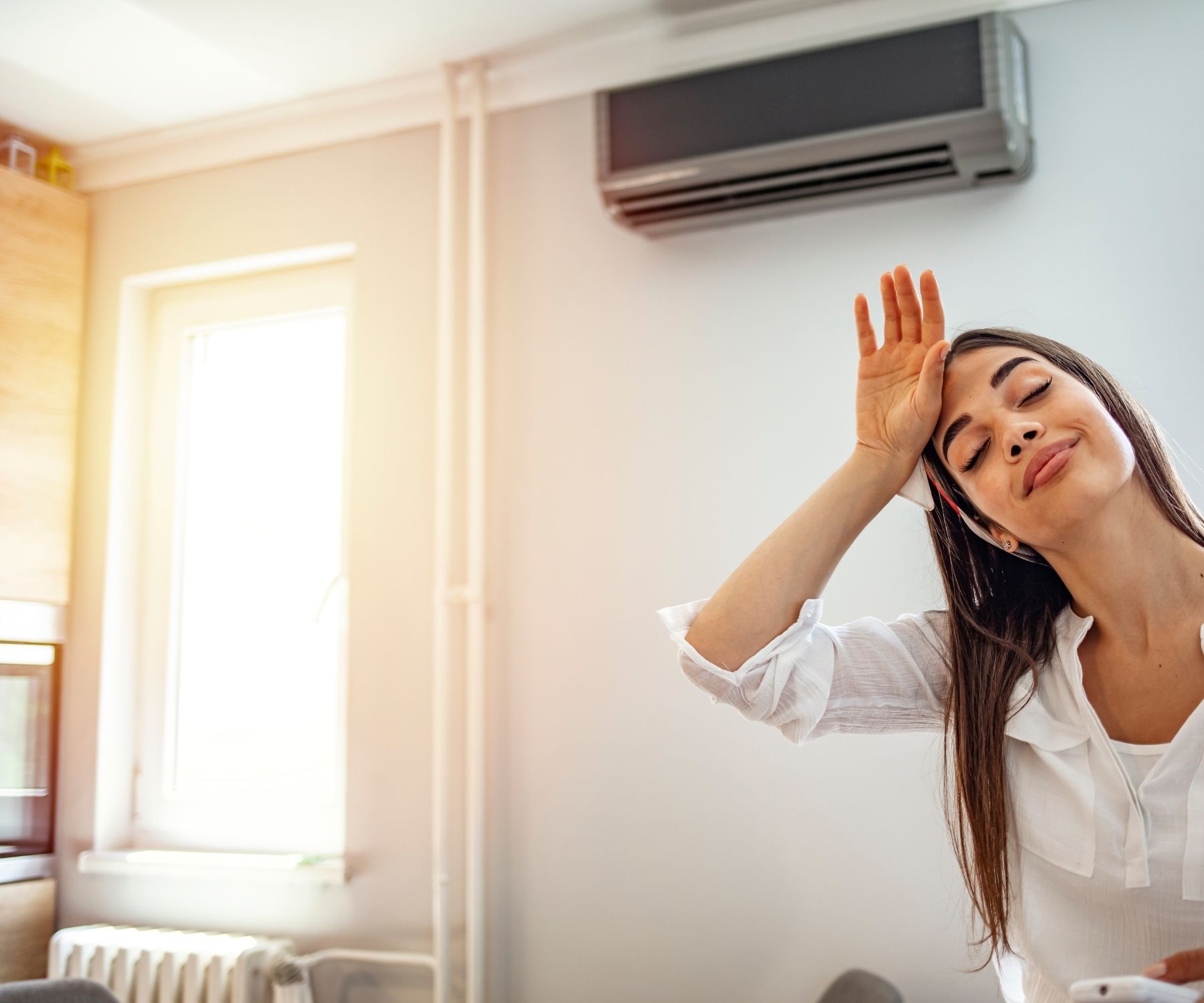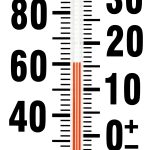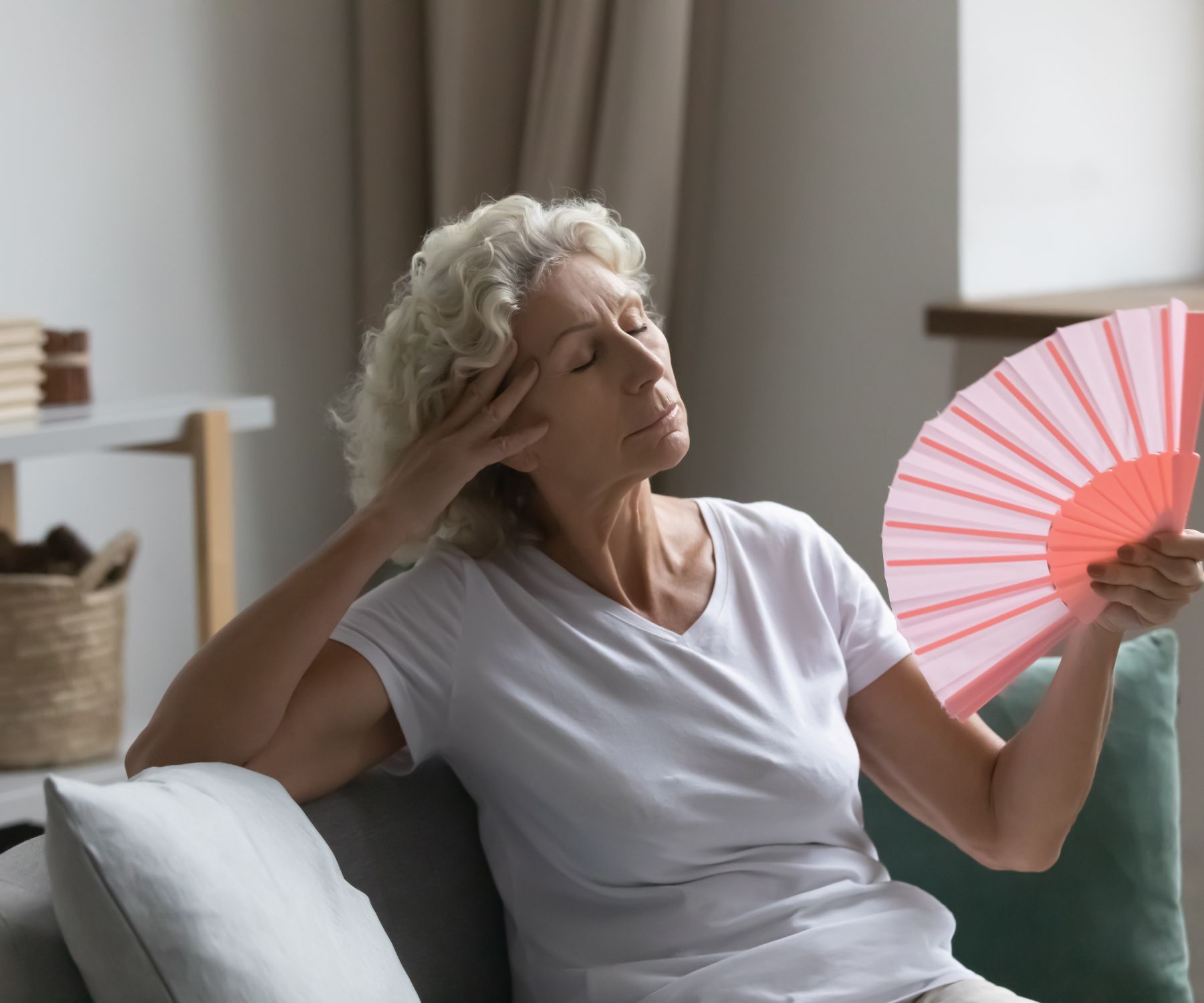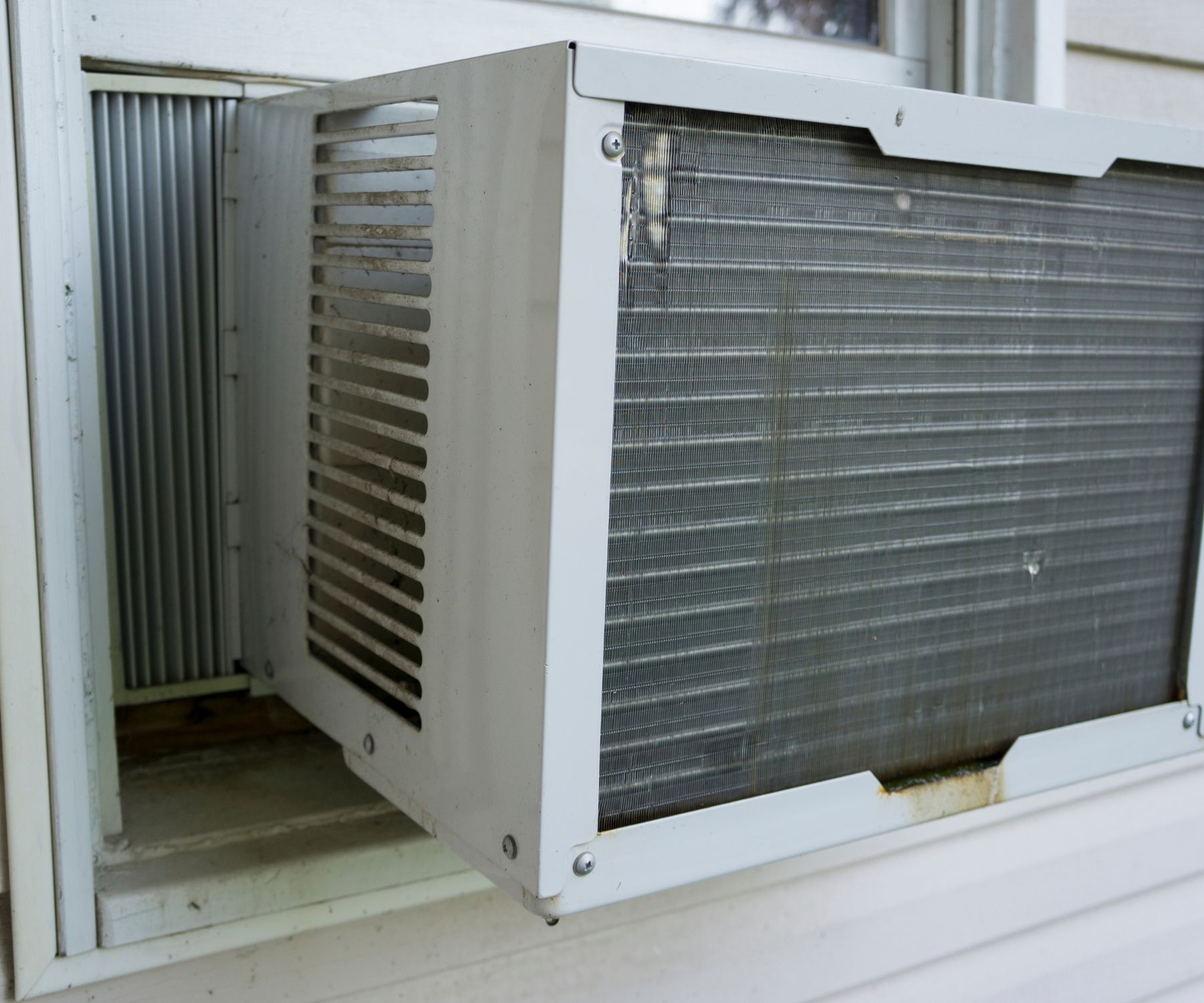|
Table of Contents Should You Give Your AC a Break?Giving your AC a break by adjusting the thermostat up a few degrees differs significantly from turning it off, as it maintains a balance between energy efficiency and system strain. While completely turning off the AC can lead to high energy use during re-cooling, moderately increasing the set temperature reduces workload and wear without compromising overall comfort. This approach optimizes energy conservation and prolongs the unit’s lifespan. |
Intro
As temperatures soar, so does our reliance on air conditioning to keep our homes cool. But amidst the sweltering heat, one question arises: Is it wise to give your air conditioner a rest?
This question isn’t just about seeking relief from the heat; it’s about finding a balance between immediate comfort and long-term considerations like energy efficiency, system durability, and cost savings.
While the air conditioner is a vital ally during summer, its constant operation raises concerns about its impact on both the machine and our finances. Deciding whether to lower its usage involves weighing various factors, including saving costs, environmental responsibility, and comfort
Understanding ‘A Break’ for Your AC
When contemplating the idea of giving your air conditioner a break, it’s essential to first clarify what we mean by “a break.”
In the context of air conditioning, taking a break can manifest in two primary ways:
1. turning off the AC entirely or
2. merely turning it down by adjusting its settings.
Each approach has distinct implications for your home’s comfort, energy consumption, and the AC unit’s longevity.
Turning Off Your AC: This involves completely powering down your air conditioning unit. Homeowners might consider this option during cooler times of the day or when the house is empty. While this can lead to significant energy savings, the drawback is the discomfort you might experience upon returning to a heated home, alongside the energy-intensive process of cooling down a warm space back to a comfortable temperature.
Turning Down Your AC: Alternatively, turning down your AC means adjusting the thermostat to a higher, yet still comfortable, temperature. This reduces the AC unit’s workload by minimizing the number of cooling cycles it performs, leading to energy savings without a substantial compromise on comfort. This approach is about finding a sweet spot where the system operates less frequently but is still ready to maintain a reasonable level of coolness.
What is the Best Approach?
Completely turning off the AC removes the workload entirely but requires a significant effort to re-cool the space later.
On the other hand, turning down the unit lessens the demand while keeping the system engaged, allowing for more consistent management of indoor temperatures and humidity levels.
Understanding these distinctions is crucial in making an informed decision about how to give your air conditioner a break. The goal is to achieve a balance that reduces energy consumption and strain on the AC system while maintaining an environment that remains comfortable and healthy for the occupants.
Pros and Cons of Turning Off vs. Turning Down AC
| Strategy | Pros | Cons |
|---|---|---|
| Turning Off AC | Maximizes energy savings during non-use periods. | Can lead to discomfort and high energy use when cooling down again. |
| Turning Down AC | Reduces energy use while maintaining a base level of comfort. | Might still consume more energy than turning off if not managed well. |
 The Case for Turning Down Instead of Turning Off
The Case for Turning Down Instead of Turning Off
Deciding between turning off your air conditioner and merely adjusting its settings can significantly impact both your comfort and energy bills. This is why turning down the AC, rather than switching it off entirely, is often the preferable strategy.
Energy Efficiency During Re-cooling: When an AC is turned off in the heat of the day and then turned back on, it has to work overtime to reduce the indoor temperature to a comfortable level.
This catch-up can consume more energy than maintaining a steady, slightly elevated temperature. By turning down the thermostat instead—raising the set temperature by a few degrees—you allow the AC to maintain a more consistent and energy-efficient operation.
Reduced Strain on the System: Constantly cycling an air conditioner on and off can put additional strain on the system, particularly on its compressor. This can lead to increased wear and tear over time, potentially shortening the lifespan of the unit.
Turning down the AC reduces the frequency of these on-off cycles, thereby lessening the strain and possibly extending the system’s operational life.
Maintaining Baseline Comfort: Completely turning off the AC can lead to significant increases in indoor temperatures and humidity levels, creating an uncomfortable environment, especially in regions with high heat and humidity.
By setting the thermostat to a higher but still comfortable level, you can maintain a more consistent and pleasant indoor climate, avoiding the discomfort of returning to an overly hot and stuffy home.
Mitigating Humidity Issues: Air conditioners do more than cool the air; they also reduce humidity levels, which is a critical component of comfort during hot weather. Turning the AC off allows humidity to build up, potentially leading to discomfort, mold growth, and other moisture-related problems.
A moderate thermostat setting helps manage humidity effectively while providing a break to the system.
Practicality and Convenience: Programmable thermostats and smart home systems have made it easier than ever to control your AC’s operation effectively. These technologies can adjust the indoor temperature based on your daily schedule, weather conditions, and personal preferences, optimizing comfort and efficiency without the need to manually turn the system on and off.
How to Effectively Give Your AC a Break
To maximize the efficiency of your air conditioning while ensuring your home remains comfortable, consider these strategies for effectively giving your AC a break without turning it off completely.
Using Programmable Thermostats:
- Programmable thermostats allow you to set your AC to operate less when you are away or during cooler times, and resume normal cooling when you’re home or during the hottest parts of the day.
Programmable Thermostat Settings Examples
Time of Day Setting When Home Setting When Away Notes Daytime (Active) 78°F (25°C) 85°F (29°C) Adjust based on personal comfort and outdoor temperature. Nighttime (Sleep) 75°F (24°C) – Consider using fans for added comfort without lowering the temperature. Away for Work – 85°F (29°C) Set to start cooling 30 minutes before returning home.
 Supplementary Cooling Strategies:
Supplementary Cooling Strategies:
- Utilize Fans: Ceiling or oscillating fans can make a room feel cooler through the wind-chill effect, allowing for higher thermostat settings. Remember, fans cool people, not rooms, so turn them off when the room is unoccupied.
- Enhance Insulation: Improve insulation in your home to keep cool air in and hot air out. This can include adding insulation to attics and walls, using thermal curtains, and sealing leaks around windows and doors.
- Shade and Ventilation: Use natural shade or create it with awnings and curtains to reduce solar heat gain. Ventilate your attic and other hot areas to prevent heat buildup that your AC has to counteract.
- Mindful Appliance Use: Avoid using heat-generating appliances during the hottest parts of the day. For example, cook during cooler hours, or opt for outdoor grilling.
Optimizing Home Layout and Behavior:
- Close Off Unused Areas: If possible, close doors to unused rooms to prevent cooling areas that don’t require it.
- Smart Ventilation: Use windows and ventilation strategies during cooler parts of the day to allow fresh, cool air to circulate through the home, reducing the need for AC.
Supplementary Cooling Strategies
| Strategy | Benefit | Implementation Tips |
|---|---|---|
| Utilize Fans | Enhance comfort with less energy use. | Use ceiling or oscillating fans to circulate air. |
| Enhance Insulation | Prevent cool air from escaping. | Add insulation to attics/walls, and use thermal window treatments. |
| Shade and Ventilation | Reduce heat gain and improve indoor air quality. | Use natural shade, awnings, and ventilate during cooler hours. |
| Mindful Appliance Use | Avoid adding heat during peak temperatures. | Use heat-generating appliances during cooler parts of the day. |
Maintenance Tips for Optimal Performance
Regular maintenance is crucial to ensure that your air conditioning system remains efficient, effective, and capable of providing comfort without unnecessary strain.
Here are some essential maintenance tips to keep your AC in top condition:
| Task | Frequency | Notes |
|---|---|---|
| Filter Cleaning/Replacement | 1-3 months | More frequently in high use periods or if you have pets. |
| Condenser Unit Inspection | Annually | Remove debris and ensure adequate space around the unit. |
| Professional Service Check | Annually | Include coolant level checks, system controls, and thermostat function. |
| Duct Inspection and Sealing | As needed | Look for leaks or damage, especially in unconditioned spaces like attics. |
Final thoughts
Navigating the balance between keeping your home comfortably cool and managing energy use during the hot months is no small feat.
But the strategy of giving the AC a rest by turning down the settings, coupled with regular maintenance and mindful usage, can significantly enhance the performance and longevity of your air conditioner.
Employing programmable thermostats to manage your cooling needs automatically allows for a seamless integration of energy efficiency into your daily life, ensuring your home remains comfortable when needed while conserving energy when possible.
Regular maintenance remains a cornerstone of efficient air conditioner operation. Simple tasks like cleaning or replacing air filters, ensuring the outdoor unit is free from debris, and scheduling annual check-ups with a professional can prevent common issues that lead to inefficiency and discomfort.1
Call to Action
As we move forward into the warmer months, take a moment to evaluate your current air conditioner usage habits. Consider implementing the strategies discussed, from installing a programmable thermostat to embracing regular maintenance routines.
If you’ve noticed any warning signs that your AC might be underperforming, don’t hesitate to consult a professional for a thorough assessment. Embracing these practices ensures that your air conditioner serves you effectively, providing a cool and comfortable sanctuary in your home throughout the summer season.



 The Case for Turning Down Instead of Turning Off
The Case for Turning Down Instead of Turning Off Supplementary Cooling Strategies:
Supplementary Cooling Strategies:





